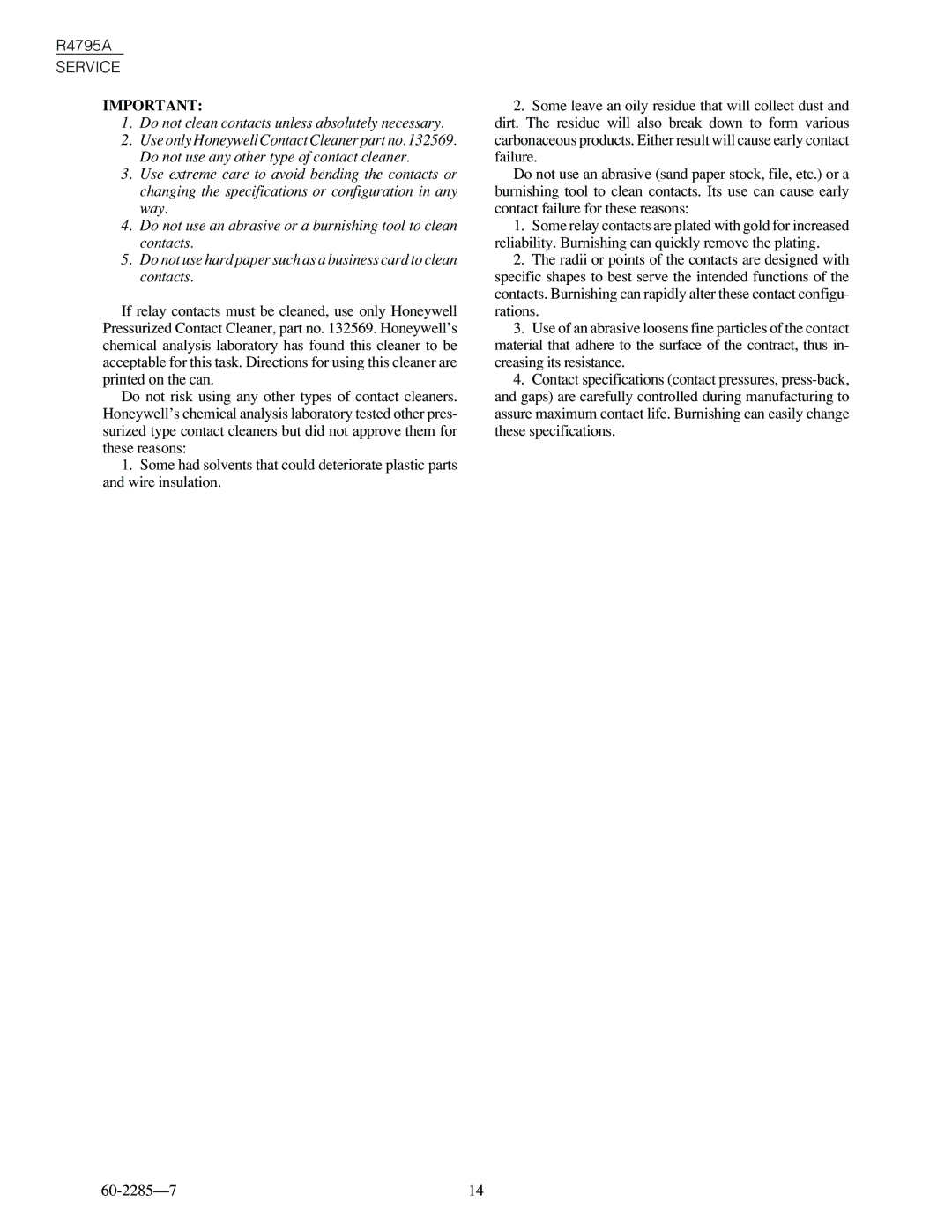R4795A
SERVICE
IMPORTANT:
1.Do not clean contacts unless absolutely necessary.
2.Use only Honeywell Contact Cleaner part no. 132569. Do not use any other type of contact cleaner.
3.Use extreme care to avoid bending the contacts or changing the specifications or configuration in any way.
4.Do not use an abrasive or a burnishing tool to clean contacts.
5.Do not use hard paper such as a business card to clean contacts.
If relay contacts must be cleaned, use only Honeywell Pressurized Contact Cleaner, part no. 132569. Honeywell’s chemical analysis laboratory has found this cleaner to be acceptable for this task. Directions for using this cleaner are printed on the can.
Do not risk using any other types of contact cleaners. Honeywell’s chemical analysis laboratory tested other pres- surized type contact cleaners but did not approve them for these reasons:
1.Some had solvents that could deteriorate plastic parts and wire insulation.
2.Some leave an oily residue that will collect dust and dirt. The residue will also break down to form various carbonaceous products. Either result will cause early contact failure.
Do not use an abrasive (sand paper stock, file, etc.) or a burnishing tool to clean contacts. Its use can cause early contact failure for these reasons:
1.Some relay contacts are plated with gold for increased reliability. Burnishing can quickly remove the plating.
2.The radii or points of the contacts are designed with specific shapes to best serve the intended functions of the contacts. Burnishing can rapidly alter these contact configu- rations.
3.Use of an abrasive loosens fine particles of the contact material that adhere to the surface of the contract, thus in- creasing its resistance.
4.Contact specifications (contact pressures,
14 |
